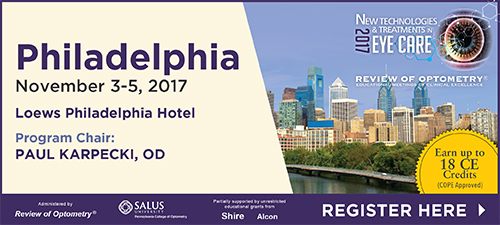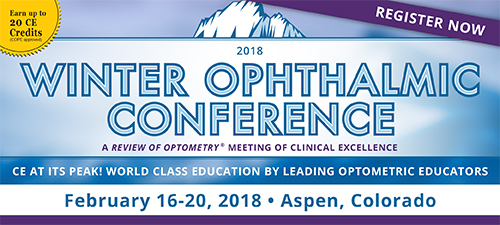
A
weekly e-journal by Art Epstein, OD, FAAO
Off the Cuff: Why I Think Allergan’s TrueTear May Be the Next Big Thing in Dry Eye
If you are really into “dry eye,” you probably spend a lot of time thinking about how a normal eye works. While most patients and practitioners think dry eye means that the eyes aren’t making enough tears, I’ve come to understand that what it really means (with infrequent exception) is that the tears and ocular surface aren’t working together properly.
|
|||||
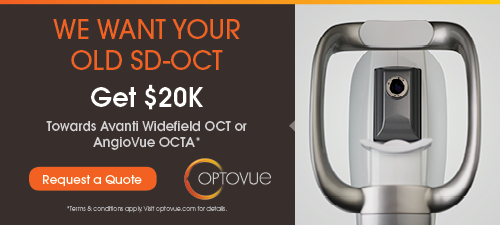 |
||
| Does a Two-year Period of Orthokeratology Lead to Changes in the Endothelial Morphology of Children? | ||||
Endothelial images of 99 subjects (six to 12 years) from completed myopia control studies were analyzed to compare changes in endothelial morphology in the central and superior cornea in individuals wearing single-vision spectacles and orthokeratology lenses over two years. Endothelial cell density (ECD), coefficient of variation in cell size (CV), and hexagonality (HEX) before and two years after treatment were compared between the two groups of subjects.
Baseline ECD and CV in the central cornea were slightly lower than those in the superior cornea, but no significant difference in HEX was found in the two corneal locations. After two years, reduction in ECD and increase in CV were only significant in the central cornea, but not in the superior cornea. Reduction in HEX was significant in both corneal locations. Subjects receiving orthokeratology had a smaller reduction in ECD in the central cornea compared with the controls (orthokeratology: 56 ± 94 cells/mm2; control: 98 ± 91 cells/mm2), otherwise, there were no significant differences in the endothelial morphology changes in the two corneal locations between the two groups of subjects. The current study confirmed differences in endothelial morphology of the central and superior corneas of Chinese children ages six to 12. The morphological response to normal aging differed between the two corneal locations. Reductions in cell density and polymegathism were found only in the central cornea, while pleomorphism was found in both locations. Orthokeratology lens wear had minimal effect on the developmental changes in endothelial morphology. |
||||
SOURCE: Cheung SW, Cho P. Does a two-year period of orthokeratology lead to changes in the endothelial morphology of children? Cont Lens Anterior Eye. 2017; Oct 10. [Epub ahead of print]. |
||||
|
|||
Slow Reading in Children with Anisometropic Amblyopia Associated with Fixation Instability and Increased Saccades |
||||
Previous studies have shown evidence of slow reading in strabismic amblyopia. Researchers recently identified amblyopia, not strabismus, as the key factor in slow reading in children. They wrote that no studies have focused on reading in amblyopic children without strabismus. As such, the researchers examined reading in anisometropic children and evaluated whether slow reading was associated with ocular motor dysfunction in children with amblyopia. Anisometropic children ages seven to 12 years with or without amblyopia were compared to age-similar normal controls. Children silently read a grade-appropriate paragraph during binocular viewing. Reading rate (words/minute), number of forward and regressive saccades (per 100 words) and fixation duration were recorded with the ReadAlyzer. Binocular fixation instability was also evaluated (EyeLink 1000).
Amblyopic anisometropic children read more slowly (n=25; mean with standard deviation, 149 ± 42 words/min) than nonamblyopic anisometropic children (n=15; 196 ± 80 words/min) and controls (n=25; 191 ± 65 words/min). Nonamblyopic anisometropic children read at a rate comparable to controls. Slow reading in amblyopic anisometropic children was correlated with increased forward saccades, increased regressive saccades and fellow eye instability during binocular viewing. Researchers concluded that slow reading in school-age children with anisometropic amblyopia was related to increased frequency of saccades and fixation instability of the fellow eye. They added that further research should consider the effects of slower reading on academic performance. |
||||
SOURCE: Kelly KR, Jost RM, De La Cruz A, et al. Slow reading in children with anisometropic amblyopia is associated with fixation instability and increased saccades. J AAPOS. 2017; Oct 9. [Epub ahead of print]. |
||||
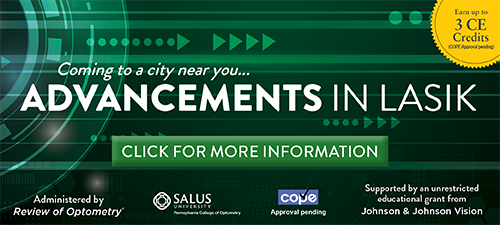 |
||
| Hyperreflective Deposition in the Background of Advanced Stargardt’s Disease | ||||
This article described an unusual manifestation of hyperreflective deposits in the subretinal space in a group of patients with clinically and genetically confirmed Stargardt’s disease. Retrospective review of color fundus, autofluorescence, infrared reflectance, red-free images and spectral-domain optical coherence tomography in 296 clinically diagnosed and genetically confirmed (two expected disease-causing mutations in ABCA4) patients with Stargardt’s disease. Full-field electroretinogram (ffERG), medical history and genotype data (in silico predictions) were further analyzed from the selected cohort.
Eight of 296 patients (2.7%) were found to exhibit small crystalline deposits that were detectable on certain imaging modalities such as color, infrared reflectance and red-free images, but not autofluorescence. The deposits were most prevalent in the superior region of the macula, and SD-OCT revealed their presence in the subretinal space. All patients presented with these findings at a notably advanced disease stage, with abnormal ffERG and a high proportion of highly deleterious ABCA4 alleles. Investigators suggested that hyperreflective subretinal deposits might be a manifestation of advanced ABCA4 disease, particularly in regions susceptible to disease-related changes such as lipofuscin accumulation. |
||||
SOURCE: Ciccone L, Lee W, Zernant J, et al. hyperreflective deposition in the background of advanced stargardt disease. Retina. 2017; Oct 12. [Epub ahead of print]. |
||||
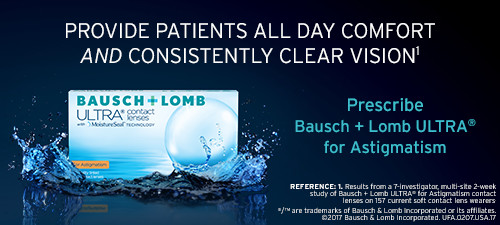 |
||
| News & Notes | |||||||||||||||
| 2nd International Forum on Scleral Lens Research Set for Houston The 2nd International Forum on Scleral Lens Research, scheduled to take place Dec. 4 in Houston at the Westin Houston, Memorial City, will share the latest research and evidence-based information to further eye care’s understanding of scleral gas-permeable lens technology. The forum will focus on topics including scleral topography, scleral lens-induced corneal swelling, lens design, translating wavefront-guided SL from the lab to the clinic, among other areas, and feature vendor exhibits spotlighting the latest SL advancements. Course master Jan Bergmanson, OD, PhD, DSc, Brien A. Holden Professor of Optometry, Texas Eye Research and Technology Center, University of Houston College of Optometry, will be joined by other field luminaries to discuss SGP lens best practices. Early bird registration ends Nov. 22. Read more. |
|||||||||||||||
SECO Calls for Award Nominations, Announces MedPRO360 Availability
|
|||||||||||||||
| MacuLogix Expands Campaign to Overcome Preventable Blindness MacuLogix announced that Damon Dierker, OD, of Eye Surgeons of Indiana, was appointed to the company’s clinical advisory panel. Dr. Dierker and fellow members of the panel have been championing evidence-based standards of care that can change the fate of the aging population. The group strongly advocates adoption of standards outlined in a recently published report that offers practical steps doctors can reference in clinical practice. The report, Practical Guidelines for the Treatment of AMD, is available free for download. |
|||||||||||||||
|
|||||||||||||||
|
|||||||||||||||
|
|||||||||||||||
|
Optometric Physician™ (OP) newsletter is owned and published by Dr. Arthur Epstein. It is distributed by the Review Group, a Division of Jobson Medical Information LLC (JMI), 11 Campus Boulevard, Newtown Square, PA 19073. HOW TO ADVERTISE |




